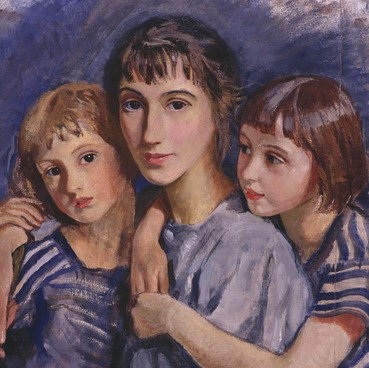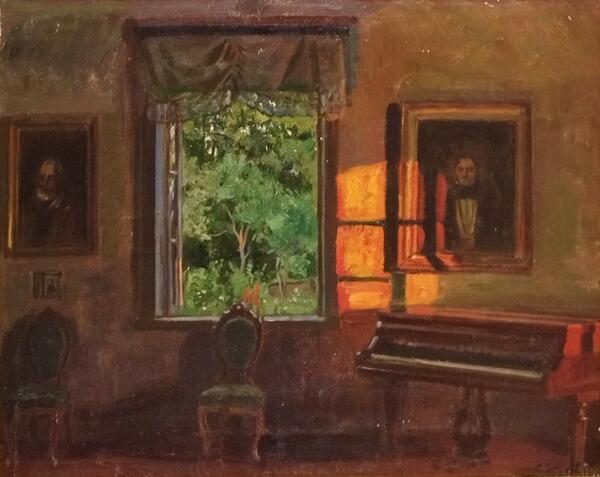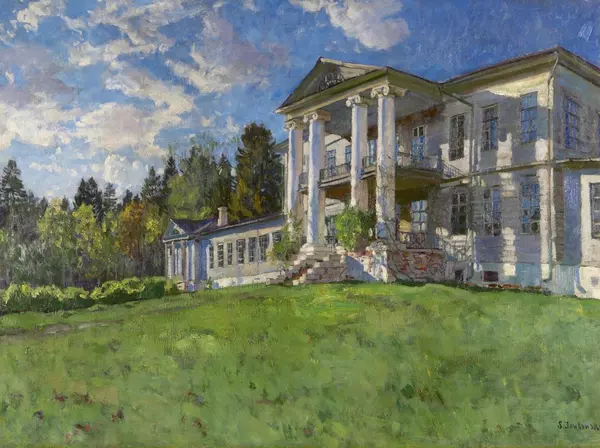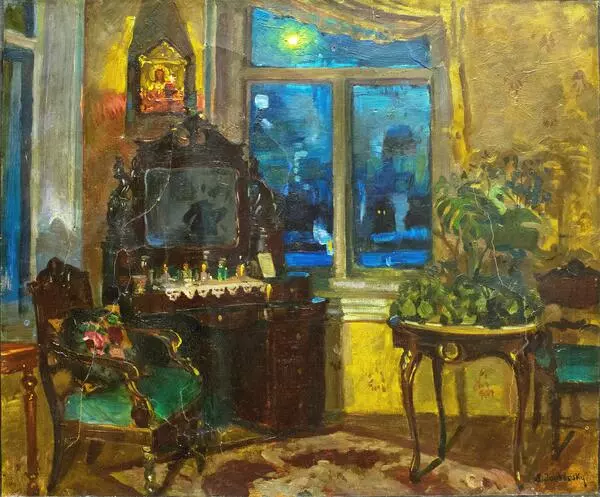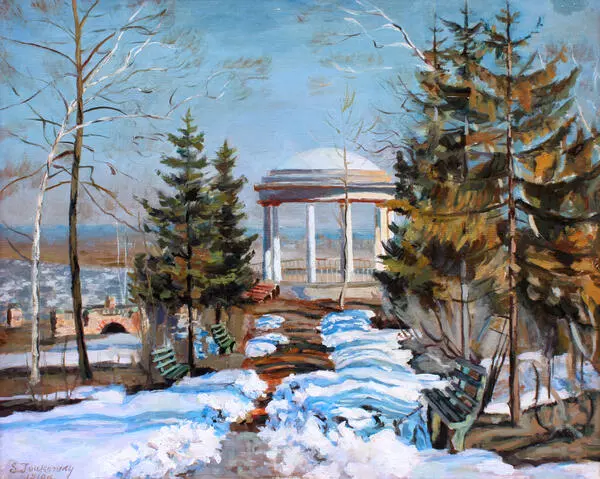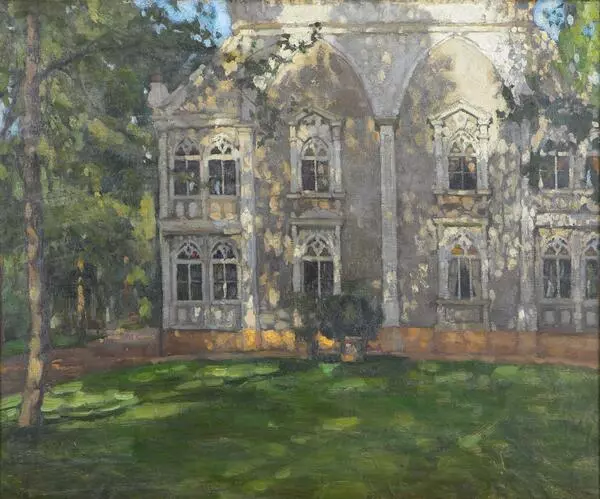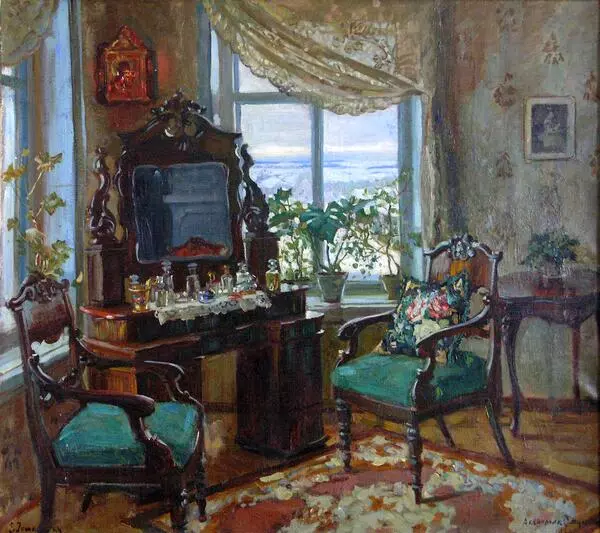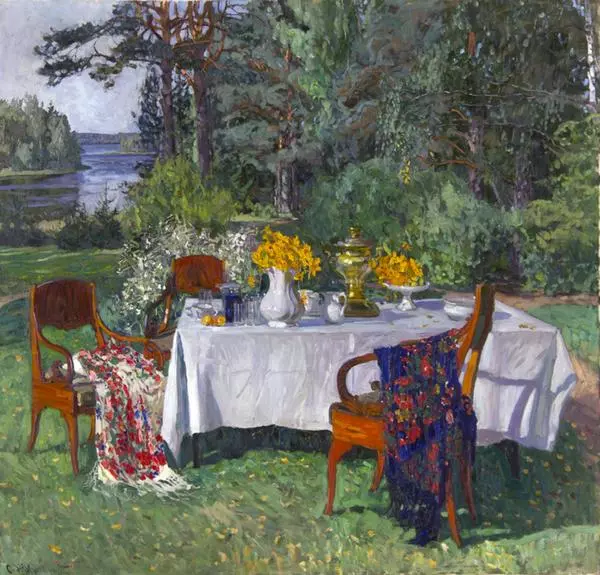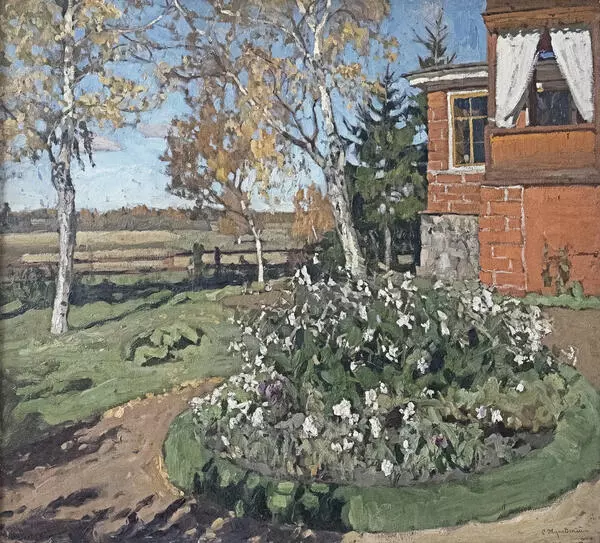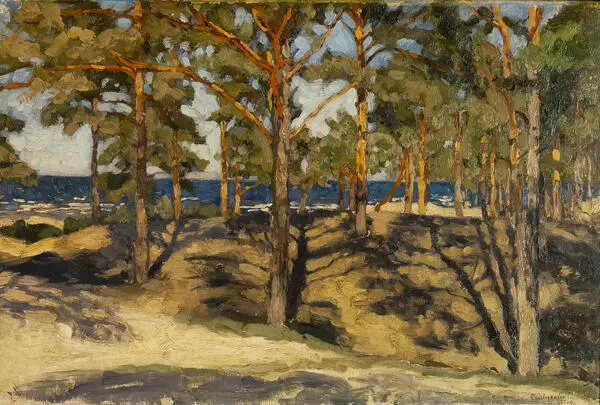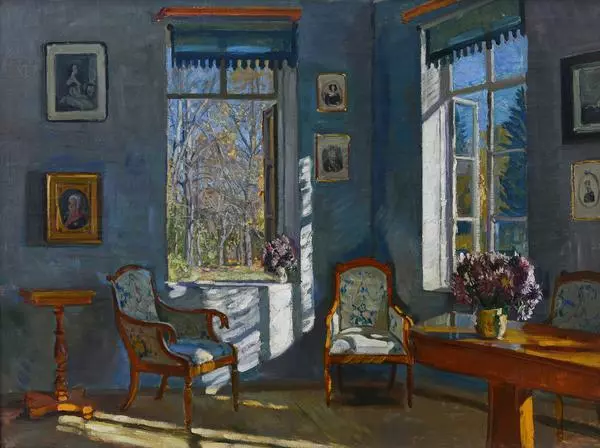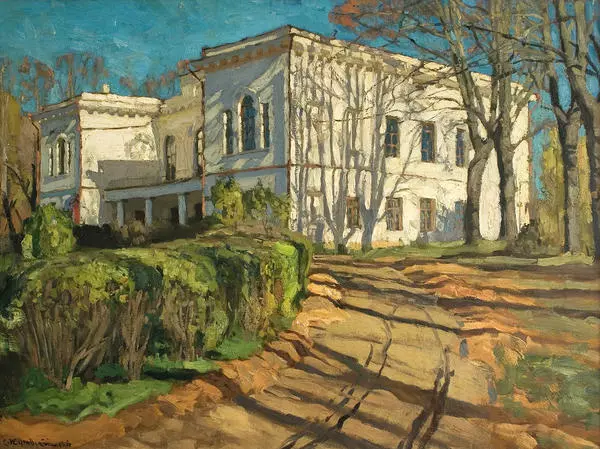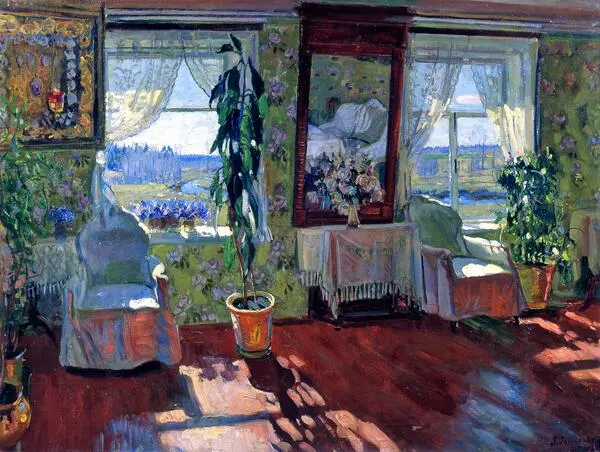Russian landscape painter Stanislav Zhukovsky was born in 1873 in the family of a Polish nobleman in the estate of Staraya Volya, which is located on the territory of modern Belarus. Despite his father’s protest, in 1892 he went to Moscow to receive an art education. Since 1895, he began to exhibit at the exhibitions of the Association of Itinerants, and in 1902 graduated from the Moscow School of Painting, Sculpture and Architecture.
By 1907, Zhukovsky was an established artist: the Academy of Arts granted him the title of Academician of Landscape Painting, in the same year he was admitted to the Union of Russian Artists. In 1907-1917, he headed his own private school, and a few years after the revolution, in 1923, he moved to Warsaw.
Like many other works by Zhukovsky, the painting Snowdrops of 1911 is filled with poetics of the outgoing era of noble estates - the artist knew the charm of life in the family estate, and felt the inevitable loss of the usual cozy world. On this canvas, the interior as such is not visible. Only a window is depicted here, and the box with just blossoming flowers on the windowsill. Extended stems of blue flowers curved and slightly drooped, reminiscent of its form of whimsical ornament of the art Nouveau style.
The window is shown with a turn to the left, which makes the gray and purple wall visible. In the middle of the window near the brown frame, there is a pale light curtain. In the right corner of the window, there is barely a crack in the window, filled with a piece of glass. Against the background of an unpleasant grey-ochre landscape and cracked windows, snowdrops do not look like messengers of the approaching spring, but rather as a symbol of fragile and defenseless beauty. Given the historical upheavals that occurred in Russia at the beginning of the 20th century, this symbol turned out to be prophetic.
In the Polish emigration, Zhukovsky reopened a private painting school, which was a great success. The artist continued to paint lyrical landscapes and interiors of country estates - for example, in the 1920s he painted a series of paintings with the interiors of the Lazenkowski Palace, the chamber country residence of the last Polish King Stanislaw Poniatowski.
The European economic crisis of the 30's did not bypass Zhukovsky - at that time he sold part of his collection in the USSR, and Soviet colleagues offered him to return to his homeland. He decided to stay in Poland, where he was met by World War II. In 1944, after the unsuccessful Warsaw Uprising, the Nazis sent him to Pruszkowski Concentration Camp, where Zhukowski died a few months before the Soviet counteroffensive.
By 1907, Zhukovsky was an established artist: the Academy of Arts granted him the title of Academician of Landscape Painting, in the same year he was admitted to the Union of Russian Artists. In 1907-1917, he headed his own private school, and a few years after the revolution, in 1923, he moved to Warsaw.
Like many other works by Zhukovsky, the painting Snowdrops of 1911 is filled with poetics of the outgoing era of noble estates - the artist knew the charm of life in the family estate, and felt the inevitable loss of the usual cozy world. On this canvas, the interior as such is not visible. Only a window is depicted here, and the box with just blossoming flowers on the windowsill. Extended stems of blue flowers curved and slightly drooped, reminiscent of its form of whimsical ornament of the art Nouveau style.
The window is shown with a turn to the left, which makes the gray and purple wall visible. In the middle of the window near the brown frame, there is a pale light curtain. In the right corner of the window, there is barely a crack in the window, filled with a piece of glass. Against the background of an unpleasant grey-ochre landscape and cracked windows, snowdrops do not look like messengers of the approaching spring, but rather as a symbol of fragile and defenseless beauty. Given the historical upheavals that occurred in Russia at the beginning of the 20th century, this symbol turned out to be prophetic.
In the Polish emigration, Zhukovsky reopened a private painting school, which was a great success. The artist continued to paint lyrical landscapes and interiors of country estates - for example, in the 1920s he painted a series of paintings with the interiors of the Lazenkowski Palace, the chamber country residence of the last Polish King Stanislaw Poniatowski.
The European economic crisis of the 30's did not bypass Zhukovsky - at that time he sold part of his collection in the USSR, and Soviet colleagues offered him to return to his homeland. He decided to stay in Poland, where he was met by World War II. In 1944, after the unsuccessful Warsaw Uprising, the Nazis sent him to Pruszkowski Concentration Camp, where Zhukowski died a few months before the Soviet counteroffensive.

